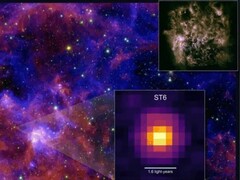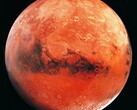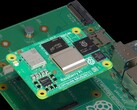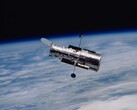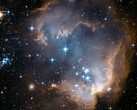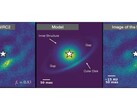JWST detects frozen organic molecules beyond the Milky Way
A recent finding in outer space has left astronomers stunned. NASA’s James Webb Space Telescope (JWST) has spotted frozen organic molecules in the place they were least expected to be: around a young star located in a distant galaxy.
The scientists were studying ST6, a protostar (a star in its earliest stage of formation), when they discovered the carbon-based compounds. The ‘juvenile’ star inhabits the Large Magellanic Cloud (LMC), a dwarf galaxy found 163,000 light-years from Earth.
The research was led by Marta Sewilo of the University of Maryland. Using the JWST’s Mid-Infrared Instrument (MIRI), the team discovered the complex organic molecules (COMs or carbon-bearing molecules with more than six atoms) inside interstellar ice. They were near the Tarantula Nebula, one of the most prolific star production factories known to us.
A cosmic milestone for astrochemistry
The spotting of COMs is a major breakthrough for the JWST. It is the first time the extra-terrestrial telescope has discovered the raw ingredients of life outside the Milky Way, as previous discoveries were limited to our galaxy.
The carbon-bearing compounds offer an opportunity to broaden our understanding of the chemical complexities of regions where stars form. Scientists can also study the evolution of molecular chemistry under different galactic conditions. In fact, early analysis has suggested the presence of glycolaldehyde, which is a potential precursor to ribose, a sugar critical for RNA.




